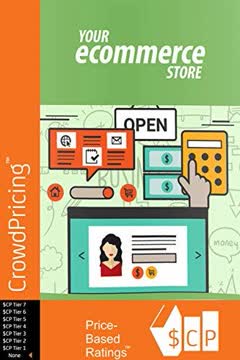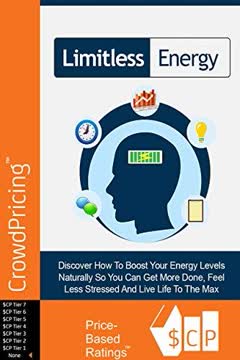Key Takeaways
1. Ecommerce is the future of retail, offering convenience and growth potential
Ecommerce is growing as well doing massive business.
Explosive growth. The ecommerce industry has been experiencing rapid expansion, with Cyber Monday sales increasing from $2.59 billion in 2014 to $3.19 billion in 2015, a 21% jump. This trend is expected to continue as more consumers embrace online shopping.
Benefits for all. Ecommerce offers advantages for both businesses and customers:
- Lower overhead costs for businesses
- Reduced prices for customers
- Convenience of shopping from home
- Ability to reach a global audience
- Easier entry into the market for new entrepreneurs
Monetization potential. For website owners and bloggers, adding an ecommerce store can significantly boost revenue compared to traditional advertising methods like Google AdSense.
2. Choose the right ecommerce business model for your goals and resources
There's no 'right way' to run an ecommerce store.
Flexible options. Ecommerce business models can be adapted to various situations:
- Existing brick-and-mortar stores expanding online
- Side businesses for additional income
- Full-time online entrepreneurship
- Bloggers and marketers monetizing their audience
Product sourcing strategies:
- Wholesale purchasing and reselling
- Dropshipping
- Print-on-demand services
- Digital products (ebooks, software)
- Handmade crafts
- Affiliate marketing
Consider your niche. Focus on a specific product category or target audience to differentiate your store and make marketing more effective. For example, selling shirts aimed at a particular demographic or with unique features.
3. Build a professional website using WordPress as your foundation
WordPress is a 'content management system' (CMS) that makes it easy for you to build your site, customize the look and add, edit and remove content as you see fit.
WordPress advantages:
- Powers 40% of websites on the internet
- User-friendly interface
- Extensive customization options
- Large community for support and resources
- Seamless integration with ecommerce platforms
Getting started:
- Choose a hosting provider (e.g., BlueHost)
- Select a domain name
- Install WordPress (often a one-click process)
- Choose and customize a theme
- Install essential plugins
Optimize your site. Focus on creating a professional appearance with a clean layout, high-quality images, and clear navigation to build trust with potential customers.
4. Select an ecommerce platform that suits your needs: Shopify or WooCommerce
The only downside is that there isn't as much of an 'obvious' choice when it comes to your ecommerce store.
Shopify: Hosted solution
- Easy to set up and use
- Extensive app ecosystem
- Built-in payment processing
- 24/7 customer support
- Suitable for beginners and growing businesses
WooCommerce: Self-hosted solution
- WordPress plugin (integrates seamlessly)
- More customization options
- No transaction fees
- Full control over your data
- Ideal for WordPress users and developers
Consider factors such as:
- Technical expertise
- Budget
- Scalability needs
- Desired features
- Payment gateway options
Both platforms offer free trials or demos, allowing you to test them before committing.
5. Design your online store to maximize sales and user experience
Whether we like it or not, our brains tend to automatically judge the value of something by comparing and contrasting it with other things.
Key design elements:
- Clean, professional layout
- Easy navigation
- High-quality product images
- Clear calls-to-action
- Mobile responsiveness
Psychological tactics:
- Use color psychology (e.g., red for urgency, blue for trust)
- Implement scarcity and time-limited offers
- Showcase customer reviews and testimonials
- Offer easy checkout options (e.g., guest checkout, PayPal)
- Use contrast pricing to make products appear more valuable
Optimize for conversions:
- Streamline the checkout process
- Implement point-of-sale upsells
- Create product bundles
- Display related products
- Use persuasive product descriptions focusing on benefits
6. Implement effective pricing strategies and persuasive product descriptions
People buy most of the time based on emotion not reason.
Pricing strategies:
- Contrast pricing (placing expensive items next to cheaper ones)
- Bundle pricing (offering discounts for multiple items)
- Limited-time offers and flash sales
- Tiered pricing (good, better, best options)
- Freemium model for digital products
Persuasive writing techniques:
- Focus on emotional benefits and value proposition
- Use sensory language to help customers imagine using the product
- Emphasize scarcity and urgency
- Address potential objections
- Include social proof (reviews, testimonials)
Continuous improvement. Utilize split testing to compare different pricing strategies, product descriptions, and design elements. Analyze the results and implement the most effective options to increase conversions over time.
7. Market your ecommerce store through SEO, content, and social media
Remember that the end objective is to sell more items – and that means you need to think carefully about the layout and design of your site.
SEO optimization:
- Research and target long-tail keywords
- Optimize product titles, descriptions, and meta tags
- Create unique content for each product page
- Build high-quality backlinks
- Improve site speed and mobile responsiveness
Content marketing:
- Start a blog related to your products or industry
- Create how-to guides and tutorials
- Develop engaging visual content (infographics, videos)
- Guest post on relevant websites
- Offer free resources to build your email list
Social media strategies:
- Choose platforms where your target audience is active
- Share visually appealing product images and videos
- Engage with followers and respond to comments
- Run social media contests and giveaways
- Collaborate with influencers in your niche
Paid advertising options:
- Google Ads for search and display advertising
- Facebook and Instagram ads for targeted campaigns
- Retargeting ads to reach previous site visitors
- Affiliate marketing programs
Remember to track your marketing efforts using analytics tools and adjust your strategies based on the data to maximize your return on investment.
Last updated:
Download PDF
Download EPUB
.epub digital book format is ideal for reading ebooks on phones, tablets, and e-readers.






